Your CV is having a conversation with potential employers before you ever walk through their door. In a field where clinical expertise is expected and passion for animals is a given, what actually makes one veterinary professional’s application rise to the top of the pile?
The answer isn’t just about listing your qualifications (though that matters too). It’s about crafting a document that tells your professional story in a way that makes hiring managers think: “We need to meet this person.” Whether you’re a new graduate competing with dozens of other fresh faces or an experienced professional looking to make your next career move, here’s how to build a veterinary CV that actually gets you noticed.
Getting the Basics Right (Because They Really Do Matter)
Let’s start with the foundation – and yes, this stuff genuinely matters more than you might think. Recruiters often spend less than 30 seconds on an initial CV scan, so getting the fundamentals right can mean the difference between making the shortlist and ending up in the rejection pile.
Choose your format wisely. For veterinary professionals, the reverse-chronological format wins every time. Start with your most recent experience and work backwards. Why? Because hiring managers want to see what you’ve been doing lately and how your career has progressed. It’s straightforward, familiar, and exactly what they’re expecting to see.
Keep it concise. Here’s the truth nobody tells you: longer doesn’t mean better. Aim for one to two pages maximum. If you can’t capture what makes you brilliant in that space, adding more pages won’t help. Every line should earn its place on your CV.
Make it scannable. Use clear headings, bullet points, and logical sections. Remember, that first 30-second scan needs to quickly show them you’re worth a closer look. White space is your friend – cramped text screams “difficult to work with” before you’ve even had a chance to prove otherwise.
The Sections That Actually Count
Your Professional Summary: Your 30-Second Pitch
This isn’t just a throwaway section at the top of your CV – it’s your chance to immediately position yourself as the solution to their problem. Instead of generic statements like “passionate veterinary professional seeking opportunities,” try something that actually tells them who you are:
“Experienced small animal veterinarian with 5 years in mixed practice, specialising in soft tissue surgery and emergency medicine. Proven track record of building strong client relationships while maintaining high clinical standards in fast-paced environments.”
See the difference? The second version tells them exactly what you bring to the table and hints at the kind of challenges you can handle.
Work Experience: Where Numbers Tell Your Story
Here’s where most people go wrong – they list duties instead of achievements. Anyone can copy job descriptions from their contract. What hiring managers want to know is: what did you actually accomplish?
Instead of: “Responsible for surgical procedures and post-operative care”, try: “Performed 200+ successful surgical procedures annually with 98% client satisfaction rates, implementing new post-operative protocols that reduced recovery times by 15%”
Use action verbs that pack a punch. Started, managed, implemented, developed, improved – these words show you’re someone who makes things happen, not just someone who shows up and does what they’re told.
Quantify everything you can. How many surgeries? What percentage improvement? How many clients? Numbers grab attention and prove impact in ways that vague descriptions never will.
Education and Certifications: Beyond the Degree
Your veterinary degree is your entry ticket, but what shows your commitment to excellence? List any specialised training, certifications, or additional qualifications. If you’re a recent graduate applying for your first vet job, don’t underestimate your clinical rotations – they show where your interests and strengths lie.
For new graduates: Your education section should work harder. Include relevant modules, dissertation topics, or any special projects that demonstrate your expertise in areas relevant to the role you’re applying for.
For experienced professionals: Keep education concise but don’t forget ongoing professional development. That emergency medicine course or practice management certification could be exactly what sets you apart.
Skills: The Hard and Soft Reality
Create a balanced skills section that covers both technical abilities and the human skills that make you effective in practice.
Hard skills might include: Diagnostic imaging, specific surgical procedures, laboratory techniques, practice management software, or specialised equipment operation.
Soft skills are equally crucial: Client communication, team leadership, mentoring junior staff, conflict resolution, or multilingual abilities.
Don’t just list these – be prepared to back them up with examples during interviews.
The Strategies That Make You Unforgettable
Tailor Every Single Application
This is non-negotiable. A generic veterinary CV suggests you’re not really that interested in this particular role. Read the job description carefully and adjust your professional summary, highlighted experience, and skills section to match what they’re specifically looking for.
If they’re emphasising client care, make sure your client interaction achievements are prominent. If it’s a surgical role, lead with your surgical experience and outcomes. This doesn’t mean lying – it means strategically emphasising the parts of your background that are most relevant.
Show Your Commercial Awareness
Veterinary practices are businesses, and they need team members who understand that reality. If you’ve contributed to practice growth, improved efficiency, or helped with client retention, highlight it. Maybe you implemented a new appointment system that reduced wait times, or you mentored junior staff in ways that improved overall service quality.
Demonstrate Genuine Passion (Beyond Just Loving Animals)
Everyone applying loves animals – that’s table stakes. What shows deeper commitment? Volunteer work with animal charities, research projects, continuing education, participation in professional organisations, or contributions to veterinary publications. These activities show you’re engaged with the profession beyond just doing your day job.
Highlight Your Growth Mindset
Include evidence of your commitment to professional development. Conferences attended, additional training completed, research projects, or even leadership roles within professional organisations. This shows you’re someone who evolves with the profession rather than someone who learned everything they needed to know in veterinary school.
The Technical Stuff That Trips People Up
Make it ATS-friendly. Many practices use Applicant Tracking Systems to screen CVs before human eyes ever see them. Use standard headings, include keywords from the job description, and save your CV as both a Word document and PDF.
Proofread like your career depends on it. Because it does. Typos and grammatical errors suggest carelessness – not exactly the quality you want associated with medical practice. Read it aloud, use spell-check, and get someone else to review it before you send it.
Skip the references line. “References available upon request” takes up valuable space and states the obvious. Instead, have a separate reference sheet ready with 3-4 professional contacts who can speak to your clinical skills and character.
What Not to Include
Avoid the temptation to include everything. Your hobbies, unless directly relevant to veterinary work, don’t need to be there. Generic volunteer work that doesn’t demonstrate relevant skills can go too. Every line should either showcase a relevant skill or demonstrate your character in ways that matter to veterinary practice.
Making Your Story Shine
Remember, your CV isn’t just a list of what you’ve done – it’s the story of who you’ve become as a veterinary professional. The best CVs show progression, growth, and increasing responsibility. They demonstrate not just clinical competence but the ability to work well with teams, communicate effectively with clients, and contribute positively to practice culture.
Your CV should leave hiring managers with a clear sense of what you’d bring to their team and why you’d be someone they’d want to work alongside during those challenging 12-hour days.








